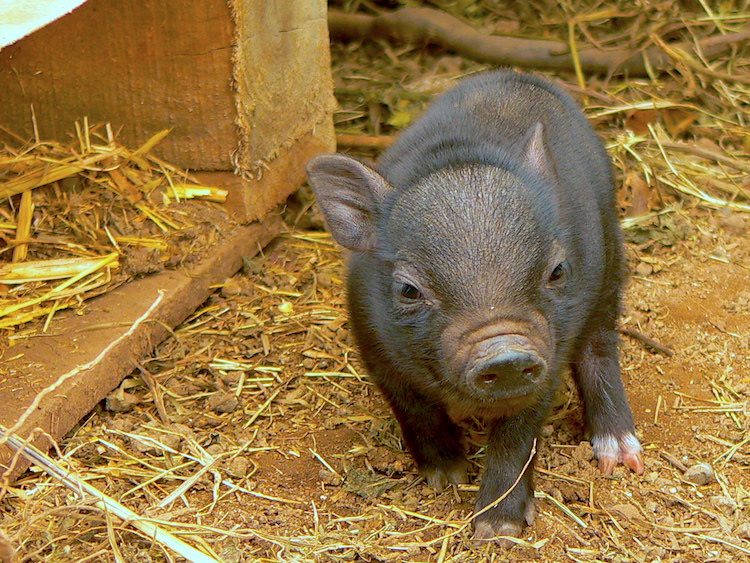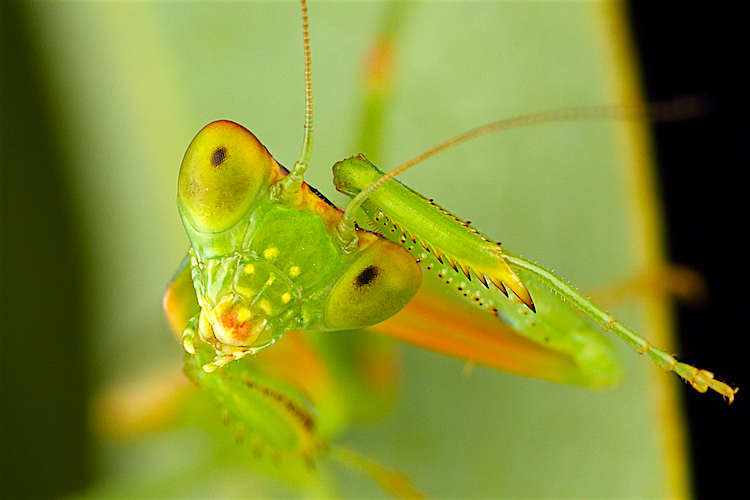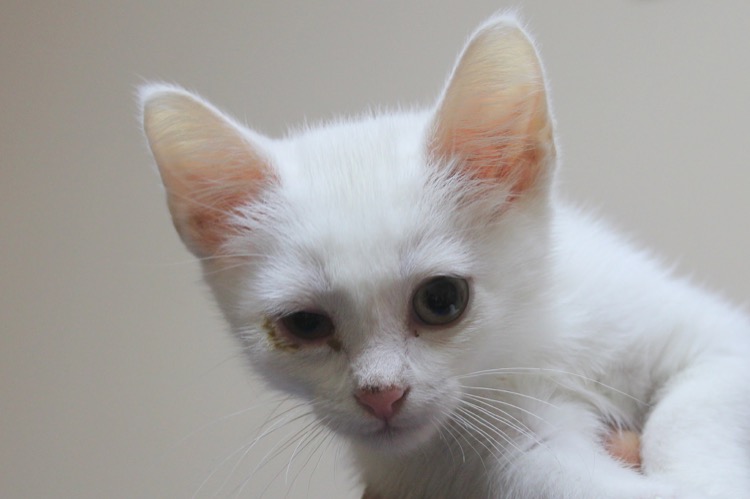Potbellied Pigs as Pets: Is This the Right Pet for You?
Learn all about keeping potbellied pigs as pets in this guide — including what to feed your pet potbellied pig and what health problems to watch out for.

Potbellied pigs as pets are fun. These cuties with their curious personalities can be a real joy to have around.
However, potbellied pigs may not be an ideal family pet.
Pigs live in herds, and they have a clear hierarchy within those herds. So, when you bring a pet potbellied pig into a family with children, the pig may try to dominate the kids.
Cats and pigs get along fine, although generally pigs are indifferent to the cats.
Pigs and dogs? Sure, they can get along, but never leave a pig alone with a dog. No matter how loving a dog is or if the pig and dog have lived together for years, the pig should not be left alone with the dog. Pigs may instigate problems but will almost always end up the injured party.

Don’t leave your pet’s safety to chance
Sign up for Petful recall alerts today.

Common Questions About Potbellied Pigs as Pets
Where do potbellied pigs come from?
They’re from Vietnam.
How long do pet potbellied pigs live?
Their average life span is 12–20 years.
What kind of temperament do potbellied pigs have?
Excellent. They are highly intelligent and playful.
How big are potbellied pigs as pets?
Actually, this is a matter of considerable debate.
Some people claim to have tiny piglets as small as 6 inches tall and weighing just 20 pounds.
However, the North American Pot Bellied Pig Association (NAPPA) says that those with potbellied pigs as pets “should expect that a mature, purebred, potbellied pig will weigh between 60 and 175 pounds” and “measure between 16 and 23 inches.”
This may seem like a lot, but in reality a farm pig can weigh up to 700 pounds — making 60 pounds quite small by comparison.
Potbellied pigs are sturdy animals and often will outweigh a dog but still be smaller in actual dimensions.
Nancy Shepard of the NAPPA says:
“Personally, I have yet to see a micro mini or tea cup pig. The claim that a full-grown pig is only 6 inches tall is inconceivable to me. You must remember that I’m from Missouri, the Show Me State; and, to date I have not seen a pig this size. The unusually small pigs I have seen appeared unhealthy and stunted, lacking good bone structure, proper conformation, and good general body condition.”
Despite multiple websites claiming to sell mini pigs that are “purse” pigs, there is no evidence that there are actual mini pigs. Often these pigs are the result of poor nutrition that stunts the pig’s growth.
A blogger named Katie, who cared for a “micro mini pig” named Cocco for several years, maintains that “mini pigs are a small version of the potbelly pig” but cautions that “there is no assurance that it will remain small.”
Please buy only from a reputable breeder and do not believe claims about being able to “guarantee” a pig’s size.
As Dr. Patty Khuly, VMD, says, “Many of these pigs will weigh well over 100 pounds once they reach their maximum poundage — at which point they’re often surrendered to a rescue.”
Here’s an interesting video from Becky’s Homestead explaining more about potbellied pigs as pets:

What to Feed a Pet Potbellied Pig
According to Dr. Daniel Gray, DVM, “Pigs grow so quickly that poor nutrition can cause lasting, or even fatal problems.”
He suggests putting your pet pig “on a pelleted, balanced diet that is formulated especially for potbellied pigs,” in consultation with your veterinarian.
Provide fresh fruits, vegetables and grains to your potbellied pig.
Contrary to popular opinion, pigs can’t eat just anything. The stereotype of “slop” being carelessly thrown from a bucket into a trough is from the days before processed foods.
- Pigs should not eat sugar, chocolate or preserved foods of any kind.
- Avoid anything that isn’t fresh.
- Limit treats to training purposes only.
“When buying frozen vegetables, please pay special attention to the sodium content; too much salt is extremely dangerous to a pig’s health,” according to Best Friends Animal Society.
Best Friends adds:
“In the spring and summer, our pigs love to go out wandering (supervised, of course) and graze on and root for fresh, tender grasses and weeds. These are very beneficial as they provide natural probiotics and also provide much-needed mental and physical exercise for these highly intelligent beings.”
Portion control is extremely important when feeding these animals. Pigs will always eat, even when they are not hungry.
A vet with experience in potbellied pigs as pets can help you determine the correct portion for the animal based on age, metabolism and level of activity.
To help with appetite control, give fresh water to the pig before mealtimes.
“Pigs like to root so [they] will often splash their water out of their bowl and not have any to drink later,” says Dr. Gray, who adds: “This needs to be monitored closely.”

Health Problems
Potbellied pigs are generally healthy animals.
The most common diseases they get are atrophic rhinitis and dippity pig syndrome.
- Atrophic rhinitis: Affects the nasal passages. It is caused by bacteria, although the origin of the bacteria is unknown. Pigs can develop an immunity to it, often passed through the mother’s colostrum. It is serious but can be treated.
- Dippity pig syndrome: Sometimes called by the medical name erythema multiforme, this condition is far more serious. It causes bleeding lesions and temporary paralysis of the hind legs. The onset is quite sudden, and it often lasts for several days. The lesions will run from the hind legs halfway up the back.
There is no treatment for dippity pig syndrome other than time. Put your pig in a quiet, temperature-appropriate room with low lighting. Pigs find this soothing, so they will keep still.
No one knows what causes this syndrome, but the best guess is stress — unfamiliar events, people or surroundings, or internal stress such as a change in diet.
Other Concerns About Potbellied Pigs as Pets
Pigs are not good with stairs. It’s hard for them to get up and down stairs.
Many people have ramps in and out of their homes as well as portable ramps for their cars. If you live in a 5-floor walk-up, you might want to think carefully before getting a pig.

Traveling With a Potbellied Pig
, and they are happy to be taken places. They make good travel companions for short distances and like to be included in family outings.
Be careful to train your pet early for this experience.
- Let them get used to the car, and always transport them in a crate. This is the safest way for a pig to travel, and your pet pig will feel at home in a familiar environment.
- If you have to travel across multiple states, look at the laws governing each state. Potbellied pigs may be subject to different health codes, thus requiring a blood test to check for infection. These blood tests are generally good for 30 days.
Local Regulations
Potbellied pigs are still classified as swine.
They are subject to zoning regulations, and every community is different. Check your zoning laws before getting a pig of any kind.
It is traumatic for a human to lose a pet, but it is even more traumatic for a pet to lose their human companions: They lose their home, everything that is familiar to them and the companions they love.
Don’t think that you can sidestep the issue. All it takes is one nosy neighbor.
Pigs make wonderful pets but only for the right person. So please think carefully about the time commitment you can make and your needs as a single person or a family.
If you decide that a potbellied pig is the right pet for you, check your local rescue organizations for a pig in need of a good home.







